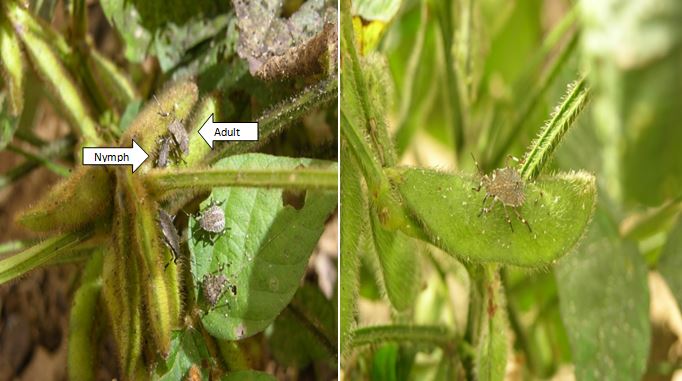| Soybean Genetics and Breeding |

|
To meet the demand of conventional soybean growers in Ohio and neighboring states USDA-ARS, Wooster has released more than 30 high-yielding non-GMO soybean cultivars with improved insect and disease resistance over last 30 years and continue to develop top performing cultivars. Stressland, Apex, Croton3.9, Stalwart, Wooster, and Prohio are few of the latest releases from this program. We also released germplasm with multiple pest (e.g., Phytopthora rot and beetle) resistance to be used by public and private soybean breeders in USA.
Apart from releasing cultivars for growers and germplasms for plant breeders, we conduct research on emerging and urgent problems damaging soybeans in Ohio. We use state of the art DNA technology to pyramid multiple disease and insect resistance in high-yielding and value added (e.g., high protein) elite soybean cultivars. These soybeans with multiple pest resistance and value added traits will lead to a reduction in the use of pesticides and aid in environment friendly, sustainable and profitable production systems. Our research will also make US soybeans more competitive in international markets. On-going Research projects:
Soybean Aphid: The soybean aphid is a major emerging pest of soybean. This pest can devastate not only soybean but also threaten other legume crops by vectoring viruses among them. The soybean aphid biotype in Ohio is different than those in central and western parts of Midwest. Growers urgently need aphid resistant soybeans. Using a source of resistance that we identified in Wooster, we are developing resistant cultivars for Ohio soybean growers to be released by 2009. We are the only ARS research group in the nation developing resistance against the Ohio aphid biotype. Aphid resistant soybean will increase profit for growers from pesticide free environment friendly soybean production. $14,000 was awarded from Ohio Soybean Council.
Phytophthora Stem and Root Rot: The most damaging disease of soybean in Ohio. We collaborate with Dr. Anne Dorrance to (a) develop soybean cultivars/gemplasm with multiple P. sojae resistant genes, and (b) map quantitative trait loci (QTL) for partial resistance to P. sojae. Two grants ($300,000) from United Soybean Board and Ohio Soybean Council awarded for these collaborations.
Beetle resistant soybeans: Bean leaf beetle, Mexican bean beetle, and Japanese beetle can reduce soybean yield by direct feeding and by vectoring viruses. These beetles are major pests of soybeans in Ohio. We are developing improved beetle resistant soybeans. Several beetle resistant lines will be released in 2009. We are the only group working on developing beetle resistant soybeans in USA.
Bean Pod Mottle Virus (BPMV): BPMV is a common virus disease in Ohio that results in significant reduction in seed yield and all current soybeans are susceptible. We have identified source of tolerance to BPMV, mapping QTL for tolerance and developing soybeans with tolerance to BPMV.
High-yielding high-protein soybeans for Ohio: identify genes that will increase the yield and seed protein (>46%). United Soybean Board will give us $200,000 over three years for this research.
Frogeye leaf spot (FLS): of soybean is an emerging disease in Ohio and many Ohio soybeans are susceptible to FLS. We are conducting marker assisted breeding for developing soybeans resistant to FLS. This research brought $10,000 from the North Central Soybean Research.
Brown marmorated stink bug (BMSB) is a serious emerging pest of soybean. Intensive research is needed for identification and characterization of soybean genes providing resistance to stress and incorporation of the resistance genes into elite cultivars.
Additional information
Our research projects are designed to address local and or regional problems, because crop production is directly influenced by the environments that surround the crop. The soybean crop in Ohio has a set of major challenges which are of lesser problems to other states of the USA. In many ways "all agricultural problems are local or regional" (like all politics are local or regional). Such problems can not be solved by research programs located at a faraway place from the problem area. Ohio is the 6th largest soybean producing state in the USA and is located at the North East Corner of the Soybean Belt. Due to its unique location, the Ohio soybean growers face some unique problems that are not priority for soybean researchers in other states. To be clear, it will very difficult for other states to solve such problems even if they want to. Ohio has only two soybean Genetics/Breeding programs - one supported by the Ohio State University/OARDC and the other is the USDA-ARS program. These two programs collaborate with each other and various departments of The OSU, including plant pathology and entomology to solve the local and regional soybean problems. Our common goal is to make the Ohio soybeans the best in the nation.
